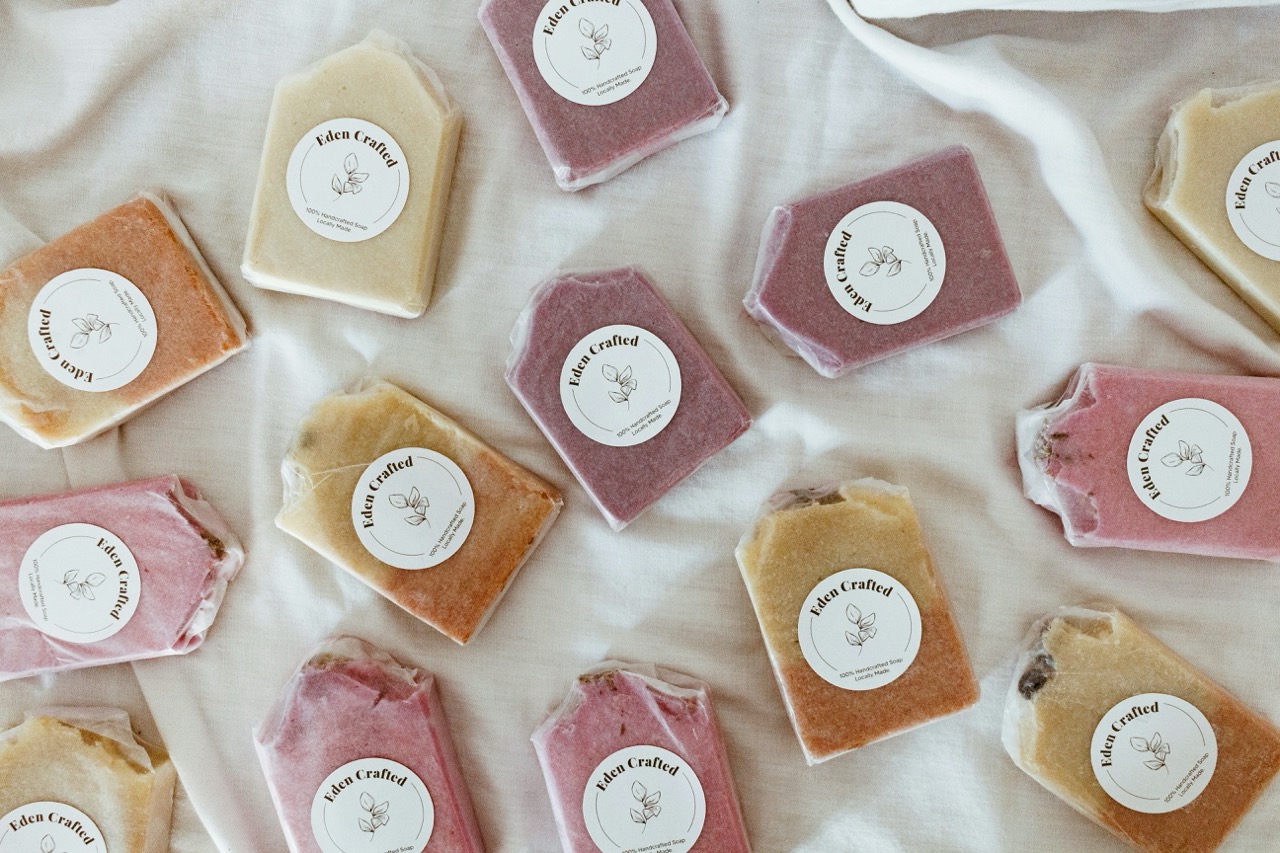Vegan, organic, classic – about different types of soap

From cleansing our bodies to uplifting our senses, soap serves a multitude of purposes. However, not all soaps are created equal. In recent years, there has been a surge in the popularity of various types of soap, each catering to different preferences and lifestyles. In this article, we’ll explore three distinct categories of soap: vegan, organic, and classic, examining their characteristics, benefits, and considerations. We’ll also mention the different methods of making soap.
3 different types of soap
Vegan
Vegan soap is crafted without the use of any animal-derived ingredients, making it suitable for individuals following a vegan lifestyle or those seeking cruelty-free options. Instead of animal fats like tallow or lard, vegan soaps utilize plant-based oils such as coconut oil, olive oil, or shea butter. These oils provide nourishment to the skin while ensuring that no animals are harmed in the process. Additionally, many vegan soaps are formulated with natural ingredients and essential oils, offering a gentle and environmentally friendly cleansing experience.
You can easily make vegan handmade soap. Catch three ideas (recipes) for vegan soap: 👉 Patchouli Vegan 👉 Green Goddess Vegan 👉 Vegan Friendly Soap, chocolate
Organic
Organic soap takes natural skincare to the next level by using ingredients that are grown and processed without synthetic pesticides, herbicides, or fertilizers. How to make organic handmade soap? Look for organic-certified oils and botanicals. Ingredients like organic coconut oil, organic olive oil, and organic essential oils can be combined with lye and water to create pure and environmentally friendly soap bars. Experiment with different botanicals and natural colorants to customize your organic soap recipes to suit your preferences.
Classic
Classic soap, also known as traditional or even artisanal soap, is made using simple yet effective ingredients. To create classic soap at home, you’ll need a combination of oils such as coconut oil, olive oil, and palm oil, along with lye and water. You can also use animal fat – lard or tallow. These traditional recipes result in a solid, long-lasting soap bar with excellent cleansing properties. Classic soapmaking allows you to experiment with different oil combinations and additives like essential oils, herbs, or exfoliants to create unique and personalized soap bars that suit your skin’s needs and preferences. There are still many people who appreciate the classic white soap, which is reminiscent of the bars used in childhood. Classic soaps can be made with or without fragrances and colorants. A 100% scent-free and additive-free soap is appreciated by many with sensitive skin or allergies.

Methods of Soapmaking
- Cold Process Soap – this is one of the most common methods of soapmaking. It involves mixing oils and lye together without external heat to create a chemical reaction called saponification, which results in soap. Cold process soap allows for endless customization with different oils, fragrances, and additives.
- Hot Process Soap – this method involves heating the soap mixture to speed up saponification. It finishes more quickly than cold process soapmaking and results in a rustic appearance. Great for those who want faster results or prefer a handmade look.
We have already published an article on our blog about 👉 Cold process VS hot process soap. Check it out!
- Melt and Pour Soap – in this method, the pre-made soap base is melted and then poured into molds. It’s a simple and beginner-friendly way to make soap, and you can customize it with colors, fragrances, and additives like herbs or exfoliants.
- Transparent Soap – is made with a clear soap base and typically contains alcohol and sugar to increase clarity. It requires more specialized ingredients and techniques compared to other types of soap but can result in beautifully clear bars.
- Liquid Soap – is made by saponifying oils with potassium hydroxide instead of sodium hydroxide used in solid soap and usually done as a hot processed soap, resulting in a soap paste that is then diluted with water. It’s a versatile option for hand and body washes, and you can customize it with various oils and fragrances.
- Exfoliating Soap – Hot or cold process, this type of soap contains exfoliating ingredients like ground coffee, oatmeal, or pumice to slough away dead skin cells and leave your skin feeling smooth and refreshed. Gardeners’ or Mechanics’ soaps are examples of exfoliating soap.
Summary
The world of soapmaking offers endless possibilities for crafting personalized skincare solutions at home. Whether you’re a beginner or an experienced soapmaker, exploring the art of DIY soapmaking allows you to create luxurious soap bars that are both effective and environmentally friendly. So roll up your sleeves, gather your ingredients, and embark on a journey of creativity and self-care as you craft your own vegan, organic, or classic soap right in your kitchen!


